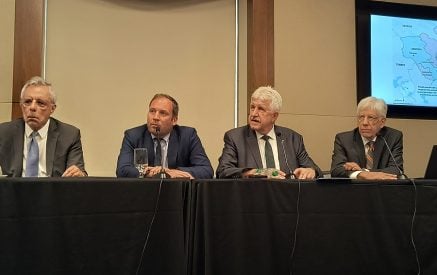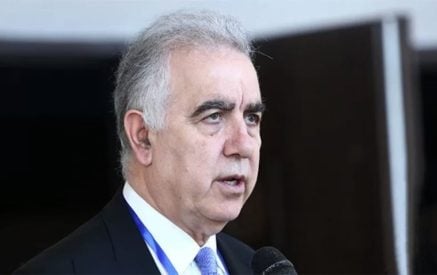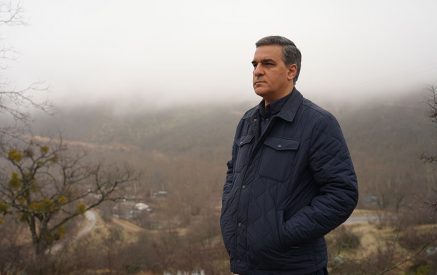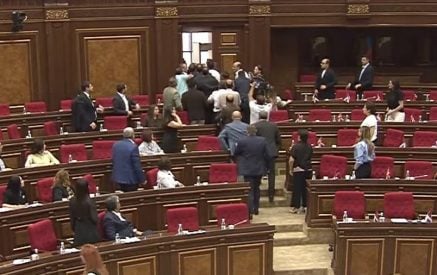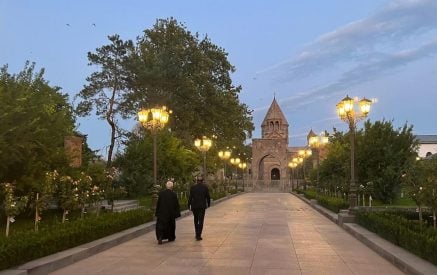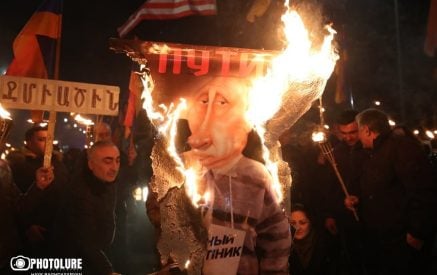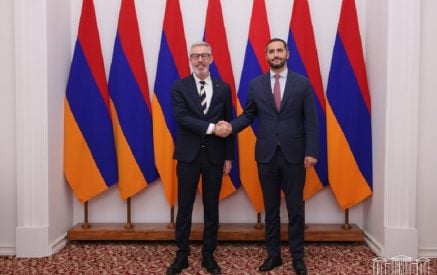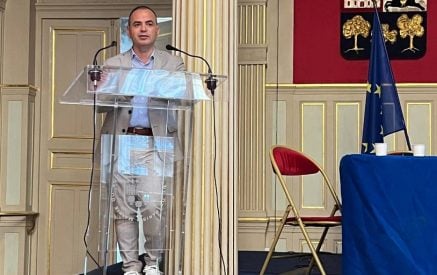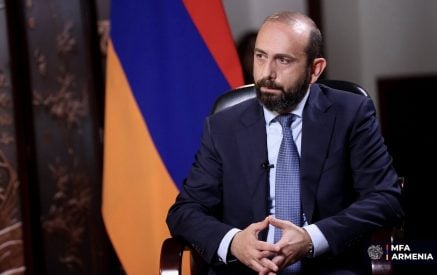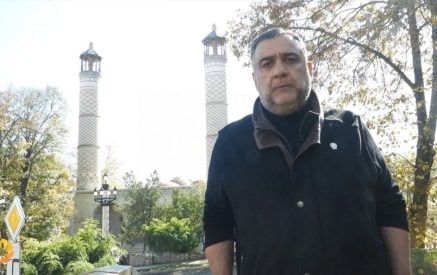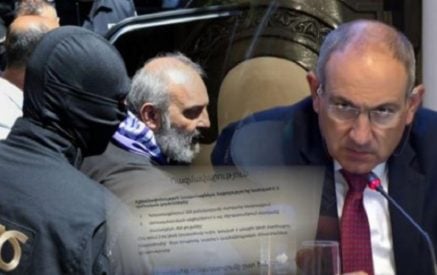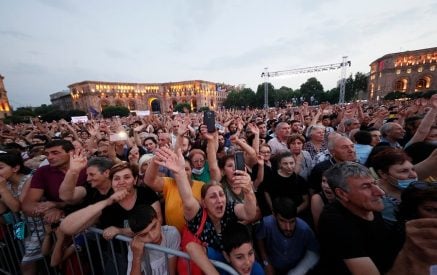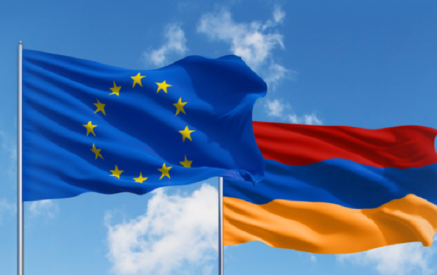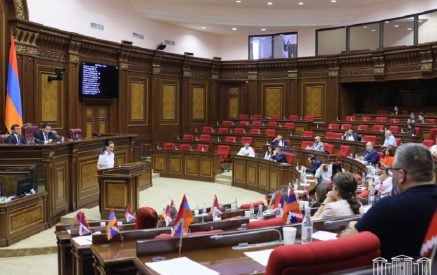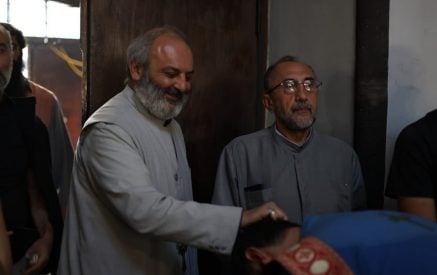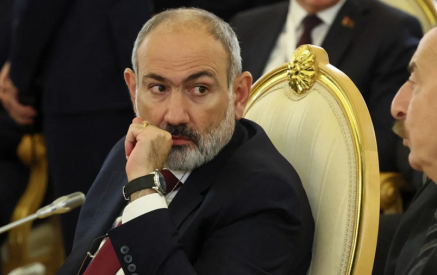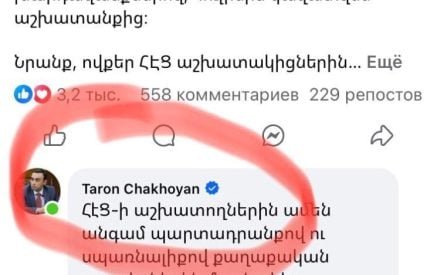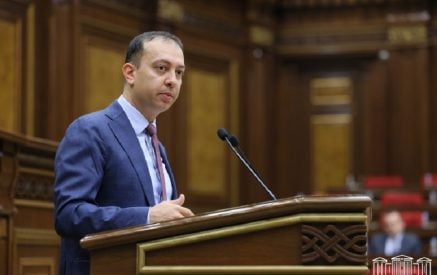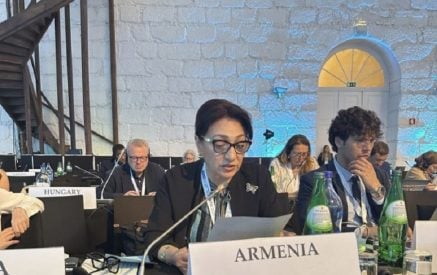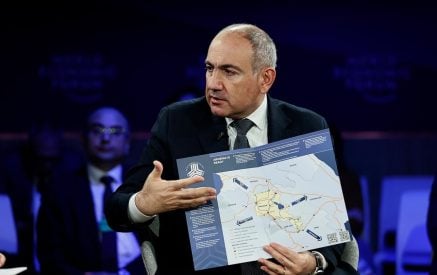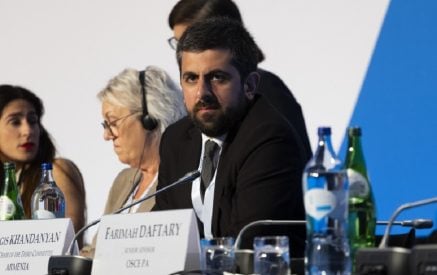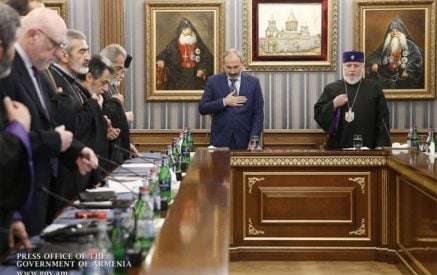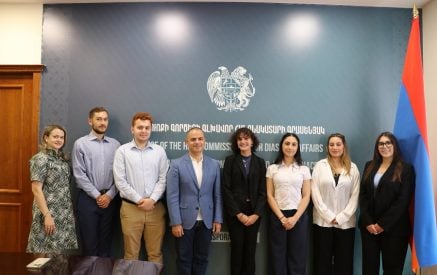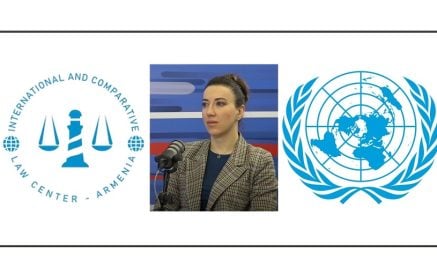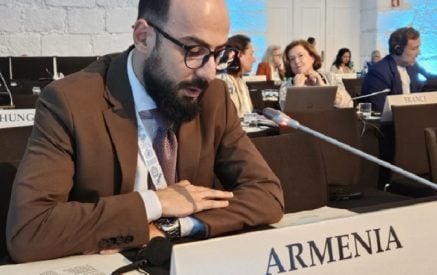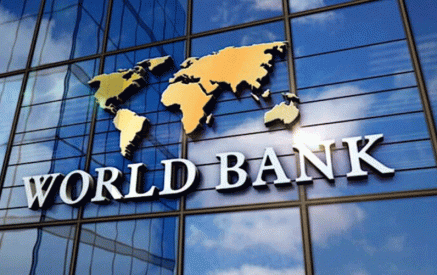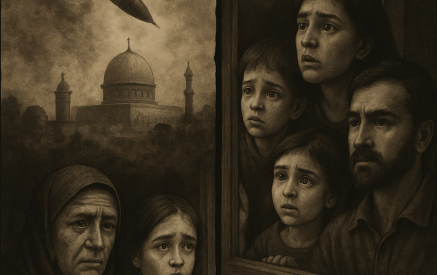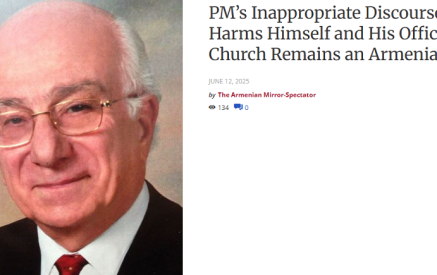Armenian Genocide 1915
Source: https://www.so-rummet.se/fakta-artiklar/armeniska-folkmordet-1915
The 1915 Armenian Genocide or Genocide denotes the systematic massacres and abuses that hit Armenians and other Christian minority groups in the Ottoman Empire in the shadow of the First World War. The research indicates that between 1 and 1.5 million Armenians, about 350,000 Assyrians / Syrians / Chaldeans / Arameans and the same number of Greeks died in the abuse. Genocide is now referred to as part of the emergence of today’s Turkey, a nation-state born of the remnants of a highly heterogeneous empire, the Ottoman Empire.
Millet system in the Ottoman Empire
At the beginning of the 19th century, the once mighty Ottoman Empire began to show clear signs of decay. At that time, the empire was still a multi-ethnic and multi-religious empire. However, the Ottoman system was based on the so-called millet system into which the subjects of the empire were divided according to their respective religious affiliation. Non-Muslims were allowed to practice their religion in exchange for extra taxes while being subordinate to Muslims in official contexts, including before the law. In practice, non-Muslims were second-class residents with limited rights (see fact box). This uneven relationship worked as long as the Turkish-Ottoman supremacy exerted its power over its subjects, but the situation changed during the 19th century. As the wave of nationalism swept across Europe, the Christian nations of the Balkans began to revolt and free themselves from the Ottoman Empire. First among these was Greece that won its independence in 1821. In the coming decades, several other “Christian states” also gained their independence from the Ottoman Empire: Montenegro 1851, Romania 1856, Serbia 1878 and Bulgaria 1878.
Read also
The Russian-Turkish War 1877-1878
The Great Russian-Turkish War of 1877-1878 ended with total victory for the Tsar’s Russia, which now dictated the terms of peace. Russia, like the other great powers, wanted to gain control of the important passages through the Dardanelles and the Bosphorus that connect the Black Sea to the world seas (see map). The war was part of Russia’s advance from the east towards these strategic passages.
Peace agreements and promised reforms
The subsequent peace treaty in San Stefano in 1878 resulted in the independence of Serbia and Bulgaria from the Ottoman Empire, while Russia demanded reforms for Armenians in the eastern “Armenian provinces” (Turkish Ermeni vilayet). In addition to Russia annexing the provinces of Batum, Ardahan and Kars in the eastern part of the Ottoman Empire, the conditions were added not to evacuate the rest of “Armenia” until the requested reforms were applied. These reforms were about the protection of the Armenians and their property against attacks from Kurdish and Cherkess armed forces, but also about more autonomy (independence) and cultural autonomy for the Armenians.
Russia’s major competitor, Britain, suspected that this was a sweeping reason for the Russians to stay in the eastern provinces indefinitely. The presence would facilitate a future advance towards the kingdom’s capital Constantinople (today’s Istanbul) and the important passages (the Dardanelles and the Bosphorus). This would seriously threaten Britain’s communications path to the crown jewel of the British Empire, India. Therefore, the British entered into a secret agreement with the Ottomans to force the Russians into a new peace negotiation with more favorable conditions for the Turks.
New peace agreement in Berlin
The British fulfilled their part of the secret agreement and forced Russia to come to new negotiations which resulted in a new peace agreement in Berlin. In this agreement, Russia would retain only the provinces of Ardahan, Batum and Kars but evacuate the rest of the Armenian provinces. In connection with this, the UK now assumed responsibility for the requested reforms to be applied in the area. As a reward for the successful renegotiation, Britain received the island of Cyprus from the Ottoman Empire.
The Armenians would be prevented from independence
However, the negotiations had alerted the Turkish leaders of a potential threat in the eastern provinces. You had already lost in principle all previous conquests in the West (the Christian nations of the Balkans) and now you risked getting it all repeated in Armenia. The Turks feared that the reforms would lead the Armenians – like the other Christian nations in the Balkans – to demand national independence from the empire after some time. That didn’t happen.
Shortly after the Berlin agreement, the Ottoman leadership embarked on a series of administrative measures aimed at reducing the Armenian population’s majority in the aforementioned provinces, thus dismissing the demand for reform. This is achieved in several ways:
Kurds who usually lived south of the Taurus Mountains were forced to move to Armenia.
The provincial borders were redrawn by budding border areas with a large Armenian population and including areas with a large Muslim majority.
These measures meant that the population was statistically manipulated and reduced the majority of Armenians in the provinces concerned. But the measures were not enough. Soon, regular massacres and ethnic cleansing began.
The massacres of 1894-1896
In the fall of 1894, the Armenian people of Sasoon refused to pay illegal taxes that local Kurdish tribes used to charge. In connection with this, armed resistance was also made, which led to the Kurds seeking help from the Ottoman Government, which sent in the regular army to assist the Kurds. At the orders of the Sultan, a large-scale massacre of Armenians began in Sasoon, which then spread to the rest of the Armenian provinces. The massacres only ended in 1896 after some European great powers threatened to intervene militarily. The massacres had then harvested close to 150,000 Armenian lives, while another 100,000 had been forced to flee to the Russian Empire.
Discrimination continued into the 20th century
The situation stabilized following the threat of intervention by the great powers, something they had done earlier in other situations in the Balkans. But even though the regular massacres stopped, discrimination against Armenians and other Christians in the area continued to increase. One important reason for this was the wave of Muslim immigrants who had been forced out of their homes in the Balkans and the Caucasus. These were refugees who, after the Balkan War 1912-1913, had been forced to leave their homes and seek protection in the Ottoman Empire. Another immigrant group, mainly Cherkesses, came from the Caucasus, which was part of Russia (the main enemy of the Ottomans). These immigrants needed homes and homes. One way was simply to take it from the “second class inhabitants” (see the millet system), ie the remaining Christians who were largely made up of the Armenians.
Turkish nationalism
However, it was not only the Christians who had a tough life. The corruption and neglect of the empire had also aroused the wrath of its own Turkish population. Soon the ideas of nationalism also reached the Ottoman Empire, after which Turkish political parties were formed. One of these was the Committee for Unity and Progress (in Europe best known as the “Young Turks”). The leaders consisted of young military officers, doctors, poets and other intellectual Turks, many of whom had studied at various European universities and been influenced by the ideology of nationalism. At first, not only reforms in the realm were called for, but also equality and justice for all residents, including for Christians. Although many were skeptical of these promises, the leading Armenian political parties cooperated with the young Turks in the hope of better living conditions for the Armenian kingdom and future protection against abuse. The political movement eventually resulted in a revolution in 1908 that deposed the Sultan and gave the young Turks power in the country. However, the joy of the Christians did not last long as the new regime soon showed signs of radicalization. Slowly but surely, a “Turkish” identity began to replace the “Ottoman” and there was no longer a place for groups that identified themselves differently, e.g. Armenian.
The vision of a “Great Turkey” is emerging
In 1913, the year before the outbreak of the First World War, a small circle of young Turks carried out a coup d’état which meant that the power of the empire was concentrated with a few people within the party’s leadership. In a report in 1917, the then Swedish envoy M. Ahlgren at the Swedish embassy in Constantinople described that the coup intended to concentrate the power of a few young Turks by banning all competing political parties and appointing key personnel within the police and army with faithful individuals.
After the coup, the new group had total control over the kingdom and began to apply a policy that included, among other things, homogenizing what remained of the Ottoman Empire. Another part of the agenda was to expand eastwards to compensate for the large territorial losses that occurred in the Balkans during the 19th century. This would be done by uniting the Turkic-speaking peoples of the Caucasus and Central Asia from where the Ottomans once emigrated (during the 9th century) (see map). This “Pan-Turkish” vision of a “Great Turkey” or large Turkish kingdom became part of the nationalist ideology that was prevalent among the then Ottoman leaders (young Turks). But there was a major obstacle on the way – Christian Armenia.
The outbreak of the First World War became a disaster for the Armenians
When the policy of “Ottomanisation” of Armenians did not make an impact, the rate of abuse and harassment of the Armenian population began to increase. These reached such limits that the European superpowers could no longer turn a blind eye to the situation. The Ottoman Government was therefore forced to agree to the implementation of the promised Berlin reforms (see above). But when the First World War broke out, reform activities were abandoned. In October 1914, the Ottoman Empire joined Germany and its allies Austria-Hungary (the so-called central powers) and declared war on Russia and its allies Britain and France. Now there was an opportunity for the Ottoman leaders to get rid of the Armenian problem in the shadow of the war.
The genocide of 1915
The genocide began the night of April 24, 1915, when about 250 Armenian political leaders, doctors, journalists, poets and other intellectuals were arrested in the capital, Constantinople. The majority of these were executed within 72 hours. The same process was repeated in the coming weeks in the rest of the empire. Meanwhile, the Armenians who had served in the Ottoman army had also begun to be separated and repositioned them in special work battalions. Many of these Armenian soldiers were mass-executed or forced to work in difficult situations with road and rail construction. Until July 1915, it was estimated that nearly 300,000 Armenian soldiers had lost their lives.
Now that the leadership was gone and all men between the ages of 16 and 65 served in the army, the Armenian population in cities and villages consisted almost exclusively of women, children and the elderly. They were often told at short notice that they would be deported to another location and then had only a few days to collect what they could carry with them before the forced march began. Sometimes these Armenians gathered in the city church and lit a fire on the building so that everyone was burned in.
Many of the Armenians who lived in cities on the Black Sea coast crowded on freighters that set course for the high seas, and returned after only a few hours, without their human cargo dumped overboard.
But the majority of the Armenian population was deported in large caravans to the desert of what is today Syria and Iraq . When these caravans left inhabited areas and were out of public sight, they were often attacked by armed Kurdish groups who, in collaboration with Turkish military and the special forces that escorted the caravan, massacred and looted Armenians on their belongings. The aforementioned special forces (Turkish Teshkilati Mahsusa) consisted of former criminals, murderers and rapists who had been pardoned from prison, given a few days’ weapons training and were employed to carry out the massacres.
The genocide ( see map)) meant not only killing and massacres. Women and girls were raped or abducted to serve as sex slaves. Many of these women and girls rather committed suicide by jumping off cliffs or down rivers. Those who survived the massacres and abuses soon began to die from exhaustion during the long marches. There are plenty of reports on how Armenian mothers asked Turks and Kurds to take their children so that they would survive. There is even evidence of cases where mothers sold one of their children for money or food for their other starving children. The survivors who reached the final destinations, in what the Swedish major Gustav Hjalmar Pravitz called “concentration camps”, became a dead torment. The lack of food and water in combination with the spread of epidemics harmed a large number of victims.
The massacres were already known in 1915 as “crimes against humanity”
Initially, there were small glimpses of hope for justice and compensation for the families affected. After reports of ongoing massacres in the Ottoman Empire had been sent to the three Allied Great Powers Britain, France and Russia, they announced (announced) an ultimatum on May 24, 1915:
With regard to this new crime against humanity and civilization, the Allied Governments openly announce to the High Gate [the term of the Ottoman Government] that they will personally hold all members of the Turkish government, as well as those who have participated in these massacres.
This is the very first occasion when the term ” crime against humanity ” has been used in an official international context.
The genocide was swept under the carpet after the state of Turkey was formed in 1923
The ultimatum was realized in the 1920 Treaty of Sèvres between the Ottoman Empire and the Allied Powers, demanding that those responsible for the Armenian massacres and deportations be extradited to tribunals and brought to trial. But it all took an abrupt turn when the new Turkish nationalist movement, led by (future president) Mustafa Kemal “Ataturk” (Turkish father) began to grow in Turkey. By successfully playing out the various superpowers against each other and promising them lucrative (profitable) contracts in what remained of the Ottoman Empire, the “chemists” managed to turn the loss of war in 1918 into victory. Turkey (then the Ottoman Empire) actually became the only defeated central power (from the First World War) to expand its territory compared to before the war. However, this happened at the expense of Armenia when in agreement with the Soviet Union (Communist Russia’s new name from 1923) regained the provinces of Kars and Ardahan. The new Turkish leadership subsequently rejected the Sèvres agreement (see above) and forced a new agreement, the Lausanne Agreement in 1923, to replace the old one. The new agreement did not mention anything about the crimes committed against humanity or compensation for those affected.
Witnesses and evidence
Although several of the European powers were allowed to leave the Ottoman Empire in connection with the outbreak of the First World War (which facilitated the genocide), there were still plenty of foreign witnesses, mainly Germans, Americans, but also Swedes. German medical doctor Armin T. Wegner took many photographs even though the Turks forbade him to do so. Finally, the German army commander asked to send Wegner home and confiscated many of his photos. He still managed to smuggle several negatives (to photos) that he hid in his belt. Today, his images form a large part of the visual evidence that the research uses in the study of the Armenian genocide. The US ambassador and other embassy staff have also witnessed the events. There were also many teachers and doctors who documented the genocide. Among these was the missionary Alma Johansson who worked in orphanages for orphaned Armenian children. We also have several diplomatic reports that the then Swedish ambassador Per Gustaf August Cosswa Anckarswaard, the envoy M. Ahlgern and the Swedish military attache Einar af Wirsén sent home to Stockholm. On July 6, 1915, Anckarswaard wrote the following to Foreign Minister Wallenberg:
Mr. Minister,
The persecutions against the Armenians have assumed great proportions, and all indications are that the young Turks want to seize the opportunity when, for various reasons, effective pressure based on need is feared, to once and for all end the Armenian question. The way to do this is simple enough and consists in the eradication of the Armenian nation.
In his memoirs published in 1942, Wirsén wrote that:
[The deportations] officially aimed to move the entire Armenian population to steppe areas in northern Mesopotamia and Syria, but in reality they intended to exterminate the Armenians. The destruction of the Armenian nation in Asia Minor must stir up all human emotions. This is undoubtedly one of the largest crimes committed in recent centuries. The way in which the Armenian problem was solved was hair-raising.
These are a few of many similar diplomatic reports and testimonies that research has collected about the 1915 genocide. Nowadays, Armenian genocide is considered, second to the Holocaust, the most studied case of genocide in history.
The political consequences of the genocide and Turkey’s denial
After the establishment of the new Turkish republic in 1923, the 1915 genocide was forgotten. The surviving victims were traumatized and most concerned with rebuilding their lives, often in other countries. The horrors of the genocide and the memories of what they had witnessed as well as the shame of those who had been subjected to sexual abuse meant that the survivors preferred not to talk about the events. Not even the children of them dared confront their parents about what had happened. It was only the grandchildren in the 1950s and 1960s who began to ask the uncomfortable questions about their origin, homeland and why they did not live there. At the same time, Turkey had no reason to pay attention to the issue at this time because no one else did. Moreover, the Republic of Armenia (established in 1918 in the Caucasus) had been incorporated into the Soviet Union and all international issues were governed by Moscow and not Armenia’s leadership in the capital Yerevan. It would therefore last until April 24, 1965, ie the 50th anniversary of the commemoration of the genocide, when hundreds of thousands in the capital Yerevan went out into the streets demanding recognition, justice and compensation. This non-sanctioned demonstration was the first nationalist event in the history of the Soviet Union when people openly defied the government’s ban and demanded responsibility and recognition.
It was another decade before the frustration over the silence of the world turned to physical violence. The young third Armenian generation, influenced by the ongoing Marxist trends internationally, said that “the world is forgetting the Armenians”. There was a need for drastic measures, which of these groupings were interpreted as the only way to re-actualize the “Armenian question” and the demand for justice. This policy culminated in a series of armed actions, initially targeted only at Turkish diplomats abroad. Between 1975 and 1987, some 40 Turkish diplomats were murdered, while subsequent bombing attacks also harmed non-Turkish deaths. Although the actions were condemned by everyone, including the Armenians, many feel that they achieved their purpose to some extent,
Soon, researchers began to study the events to understand how a nearly seven-decade-old history – regarded as dead and buried by the Turkish state – could provoke such anger and violent acts of violence. The research on genocide in 1915 has subsequently (since the 1980s) meant that the events today, almost after the Holocaust, have become the most studied case of genocide in history. But despite this, the 1915 Armenian genocide is still considered a “controversial” issue in many political circles. This is entirely due to the active denial of the Turkish state, which today still firmly wants to claim that the genocide never took place. The denial has evolved and adapted as research has grown, but the final point is the same: What happened during the First World War was not a deliberate plan for the extermination of the Armenians, and the state of Turkey has no reason to apologize or compensate the families affected. Thanks to its geopolitical position, Turkish leaders throughout the 20th century (and 2000s) have succeeded in convincing many states to actively or passively confirm Turkey’s genocide denial.
Literature:
Vahagn Avedian, Knowledge and Acknowledgment in the Politics of Memory of the Armenian Genocide , Routledge, 2019
Göran Gunner, The Genocide on Armenians: Seen with Swedish Eyes , Artos, 2012
Vahagn Avedian (ed.), Armin T. Wegner: The Expulsion of the Armenian people in the desert , the Armenian Federation in Sweden, 2015
Einar af Wirsén, Memories from peace and war , Bonnier, 1942
Klas-Göran Karlssson, “Those who are innocent today can be guilty tomorrow”: the Armenian genocide and its aftermath , Atlantis , 2012
Hrant Pasdermadjian, Histoire de l’Arménie depuis les origines jusqu’au traité de Lausanne, Paris, 1949
Text: Vahagn Avedian, file. in history, with research interest in human rights, peace and conflict research and democracy studies, editor of genocide1915.se and karabach.se
Websites:
http://armenica.org/vahagnavedian/
http://folkmordet1915.se/
http://karabach.se/
Summary of the Armenian Genocide of 1915
Source: https://www.so-rummet.se/fakta-artiklar/sammanfattning-av-det-armeniska-folkmordet-1915
During the First World War, the Ottoman government carried out a genocide on its Christian population. Massacres, deportations, starvation and diseases killed up to two million people. The Armenians made up the majority of the victims (between 1 and 1.5 million victims) while about 350,000 Assyrians / Syrians / Chaldeans / Arameans and the same number of Greeks died from the abuse. Turkey has since persistently denied that any crime has been committed and continues today to oppose all attempts at a wider recognition of the 1915 genocide.
The Ottoman Empire – an empire in disrepair
The Ottoman Empire , which once stretched from the Arabian peninsula in the east to the Balkans in the west and North Africa in the south ( see map ), fell into disrepair in the early 1800s. Corruption and mismanagement of the empire, especially towards the Christian nations of the Balkans had weakened the empire.
The empire underwent major changes in the 19th century, which meant moving from being a multi-ethnic and multi-religious empire to becoming a Turkish nation state in 1923. It was the wave of ideas of nationalism in Europe that accelerated this transformation after the Christian nations in the Balkans. rebelled and one after another freed himself from the Ottoman Empire: Greece 1821, Montenegro 1851, Romania 1856, Serbia 1878 and Bulgaria 1878.
The foundation of a Turkish nation state is starting to take shape
After the Great Russian-Turkish War of 1877-1878, the Ottoman Empire had basically lost all its conquered territories in the Balkans. The liberation of the Christian nations meant that the empire had now largely become a homogeneous (unified) Muslim kingdom. Soon the Arab and North African regions of the empire also began to show the same rebellious signs. After that, it was not long before they left the empire as well. In the end, what remained of the once great Ottoman empire was largely only a Turkish-Muslim population, ie the basis of the nation-state that would soon become Turkey today.. But there were other large non-Turkish and non-Muslim minorities within the borders of the kingdom. Of these, the Armenians made up the largest population. The Armenians also lived in a well-defined area in the six Armenian provinces in the eastern part of the empire ( see map ).
The Armenians were second class citizens
At the end of the 19th century, the wave of nationalism also reached the Armenians in the Ottoman Empire who, like the Christian nations of the Balkans, demanded reforms and greater rights.
The Ottoman Empire was based on the so-called Millet system, where the inhabitants were divided according to religion rather than ethnicity ( see map ). Non-Muslims could practice their religion, have their schools and manage their internal affairs but in exchange for extra taxes. Christians were not allowed to carry weapons, serve in the military, and were disadvantaged in any court proceedings against Muslims. This meant that Armenians and other Christians within the borders of the empire were a kind of second-class citizen and could easily be subjected to abuse by Muslims without having the legal right to defend themselves.
The situation is deteriorating for the non-Muslim population
Armenian villages were often attacked by Kurdish and Cherkess armed forces demanding illegal taxes. When the Armenians in 1894 refused to pay these taxes, the Kurdish forces called on the Ottoman government’s help and together began massive massacres of Armenians. These massacres lasted until 1896 when the threat of military intervention by some European great powers stopped them. In total, it is estimated that over 100,000 Armenians were killed while another 150,000 were allowed to flee the country to survive.
The situation for the Armenians worsened after the Balkan Wars 1912-1913 when the Muslim population of the affected countries was forced away from their homes. A similar exodus of Muslims occurred in the Caucasus (to the majority of the Cherkesses) that was part of the Russian Empire. The large numbers of Muslim immigrants seeking protection in Anatolia (the Ottoman core country – most of today’s Turkey) worsened the situation of Armenians and other remaining Christians.
The vision of a “Great Turkey”
It was not only the Christian groups that demanded better living conditions, but also the Turks were dissatisfied with how the kingdom was being degraded. The dissatisfaction resulted in a revolution in 1908, when the so-called “young Turks” (a political grouping) overthrew the sultan and assumed power in the kingdom. The leaders of the young Turks were, like many other political parties at this time, influenced by nationalist ideas. They planned to create a new empire – the “Great Tour” – a large homogeneous Turkish kingdom. The vision was to bring together all Turkish-speaking people in Central Asia under Ottoman leadership. However, there was a major obstacle on the way, namely Christian Armenia that was shared between the Ottoman and Russian empires. When a first attempt at forced assimilation (by “osmizing” all residents) failed, a more tangible solution to the “Armenian issue” began to be planned. However, the Christian minority population could not do anything as long as the European superpowers were present in the region and could intervene in the Armenian advantage, just as they had done before in the Balkans. But the opportunity would soon present itself in the form of a world war.
The genocide took place in the shadow of the First World War
When the First World War broke out in 1914, the young Turks chose to join Germany and its allies, the so-called central powers. Now in the shadow of the war and the absence of the European superpowers, much more freely had hands to deal with the Armenian problem.
On the night of April 24, 1915, hundreds of Armenian political leaders, doctors, journalists, poets and other intellectuals were arrested in the capital, Constantinople . All with a few exceptions were executed within 72 hours. The Ottoman regime (young Turks) also began to isolate all Armenians serving in the regular army and relocated them to special work battalions. These soldiers either had to work to death in various construction projects or were mass-executed in large groups. By the summer of 1915, it was estimated that some 300,000 Armenian soldiers had died. When the leaders and the adult men who could resist were gone, only women, children and the elderly remained. These were gathered in large caravans deported to concentration camps in the desert of northern Mesopotamia (present-day Iraq) and Syria.
In some villages and towns, the Armenians were gathered in a church and burned to death. When the caravans had left cities and villages and were out of public sight, it happened that they were attacked by armed Kurdish groups who, in collaboration with Turkish military and militia, massacred the Armenians and looted them on their property. It was also common for women and girls to be raped or abducted to become sex slaves. Many women and girls chose to commit suicide. Others died on the road during the long marches to the concentration camps as a result of lack of food and water or of pure exhaustion. When the survivors reached the final destination, starvation continued to reap victims as epidemics began to spread.
ADVERTISEMENT
The political consequences of the genocide
It is estimated that somewhere between 1 and 1.5 million Armenians lost their lives in the genocide. To that number are added about 350,000 Assyrians / Syrians / Chaldeans / Arameans and just as many Greeks.
In research, the Armenian genocide is usually called a “successful” genocide that resulted in the nation state of Turkey in 1923. The genocide is called successful because the goal was achieved – to create a homogeneous Turkish population within the country’s borders and get rid of the “Armenian issue” and other Christian minorities. At the same time, they escaped all responsibility.
Since the 1920s, Turkey has steadfastly denied that any wrongdoing has been committed, let alone a genocide. The great losses in human life, it is claimed, were instead a natural consequence of the ongoing world war that affected everyone, not just Armenians and other Christian sections of the population.
The genocide continues to be a sensitive issue in international politics and the demands for international recognition of the incident by Turkey always result in Turkish anger and threats of economic and diplomatic reprisals.
Literature:
Vahagn Avedian, Knowledge and Acknowledgment in the Politics of Memory of the Armenian Genocide , Routledge, 2019
Vahagn Avedian (ed.), Armin T. Wegner: The Expulsion of the Armenian People in the Desert , Armenian National Federation in Sweden, 2015
Klas-Göran Karl’s son, “those who are innocent today might be guilty tomorrow”: the Armenian genocide and its afterbirth , Atlantis, 2012
Hrant Pasdermadjian, Histoire de l’Arménie depuis les origines jusqu’au traité de Lausanne, Paris, 1949



